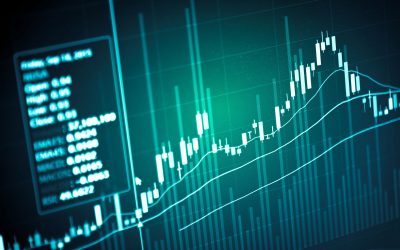Even novice traders know that you should trade following the trend. However, not everyone entirely understands what a trend is and how to identify it correctly. In this article, we will try to shed some light on trend trading and some of its intricacies.
Article content
What is a trend?
Simply put, the Forex trend is the price moving in a particular direction over a time period. If there is a pronounced trend in the market, it means that the majority of traders are unanimous in the direction of the price and their trades, or that a large market maker has appeared and forces the price in the direction it needs. In the Forex market, they use “animal” terms for trends: an uptrend is called bullish, and a downtrend is called bearish.
- A bullish trend can be identified by successively higher highs and lows on the chart.
- A bearish trend is characterized by a series of lower highs and lower lows.
There is also a third trend type – a sideways trend. It is also called a horizontal trend or flat market. A sideways trend can be observed when there is no pronounced trend in the market, the forces of supply and demand are nearly equal and the price consolidates within a horizontal corridor or channel. When the price breaks the border of the channel, it usually signals the beginning of a new trend.
Why you need to know which trend dominates the market
A trend is the general direction of the price. There is a popular saying in the trader community that “The trend is your friend”. Trading with a trend reduces the risk of losses and increases the likelihood of a successful trade outcome. The ability to correctly identify the trend will allow you to earn more and lose less.
Ways to identify the direction of the trend
There are many ways to identify a trend. Moreover, as you gain more trading experience, it becomes easier to do it. Here are a few methods you can use to determine the dominating trend:
Examine the trading chart carefully
Sometimes the direction of the trend can be determined visually. To do this, it is enough to draw a line parallel to the price chart. If it is directed upwards, the trend is bullish, if it is directed downwards, it is bearish.
Use the trend lines
There are several methods for plotting trend lines on the chart. You can draw a line through successive highs (lows). If it goes up, then the market is in a bullish trend, and if it goes down, it’s bearish.
By volume
You can also predict the future price direction by the trading volumes reflected by the body of the candlestick body on the bar chart. If the candle’s body is long, it indicates a large volume, so further price movement is likely to continue in this direction.
Using technical indicators
With the development of technology and the introduction of technical indicators, the life of a trader has become much easier. Nowadays, there’s a wide variety of technical indicators, which serve different purposes. Some of them are used to determine the direction of the trend.

Here are just a few of them:
- Moving Average
This indicator is most often used to determine the current market trend. The angle of the MA lines is important. If they are located in an upward direction, then the trend is bullish, and if MAs are in a downward direction, then the trend is bearish. If the MA lines are interlaced indicates that the market is flat and signals a sideways trend. The location of the price also indicates the trend. When it is above the MA, the market is dominated by the bulls. And vice versa – if the price is below the MA, the market is bearish.
- Fractals
This technical indicator also helps determine the trend. If a fractal is formed above the previous one, it indicates the uptrend, if it’s formed below – the downtrend. This method is somewhat similar to the visual method of trend determination.
- Parabolic SAR
This is a fairly popular indicator for determining the direction of the trend. Parabolic SAR draws dots that make it easy to identify the trend. When the dots are formed above the price, the bears dominate the market. When the dots are located below the price, the bullish trend is underway.
- MACD histogram
The MACD histogram is located below the chart. If the bars are above the zero level and each subsequent bar is higher than the previous one, we can talk about an uptrend and vice versa. Also, this indicator allows you to identify reversal points. For example, when the rate updates the price maximum on the chart, but the next histogram’s high is lower than the previous one, you should expect a reversal.
As you can see, a trader can use different methods to determine the direction of the price. Those who don’t trust technical indicators can determine the trend visually or using the trend lines. Others prefer technical indicators, which greatly speeds up the process. Whichever method you choose, the main thing is to strictly follow the rules to identify the price movement correctly. After all, the direction of your future trade depends on it. If you are guided by these principles, then the trend can really become “your friend”.
If you like our articles, follow us on Facebook and Instagram. Stay tuned for more interesting posts on our blog. We post new material several times a week.






